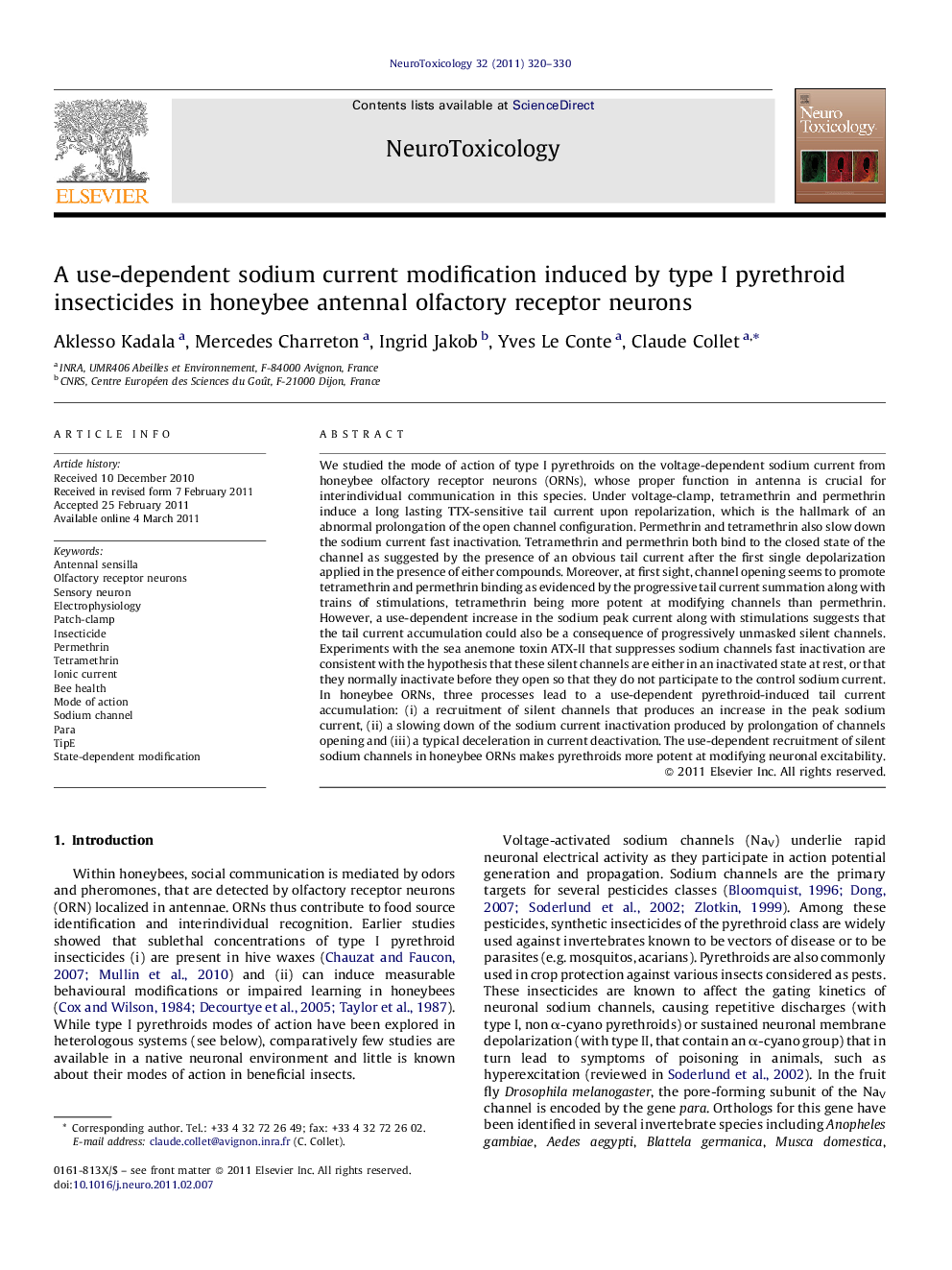| کد مقاله | کد نشریه | سال انتشار | مقاله انگلیسی | نسخه تمام متن |
|---|---|---|---|---|
| 5854994 | 1131708 | 2011 | 11 صفحه PDF | دانلود رایگان |

We studied the mode of action of type I pyrethroids on the voltage-dependent sodium current from honeybee olfactory receptor neurons (ORNs), whose proper function in antenna is crucial for interindividual communication in this species. Under voltage-clamp, tetramethrin and permethrin induce a long lasting TTX-sensitive tail current upon repolarization, which is the hallmark of an abnormal prolongation of the open channel configuration. Permethrin and tetramethrin also slow down the sodium current fast inactivation. Tetramethrin and permethrin both bind to the closed state of the channel as suggested by the presence of an obvious tail current after the first single depolarization applied in the presence of either compounds. Moreover, at first sight, channel opening seems to promote tetramethrin and permethrin binding as evidenced by the progressive tail current summation along with trains of stimulations, tetramethrin being more potent at modifying channels than permethrin. However, a use-dependent increase in the sodium peak current along with stimulations suggests that the tail current accumulation could also be a consequence of progressively unmasked silent channels. Experiments with the sea anemone toxin ATX-II that suppresses sodium channels fast inactivation are consistent with the hypothesis that these silent channels are either in an inactivated state at rest, or that they normally inactivate before they open so that they do not participate to the control sodium current. In honeybee ORNs, three processes lead to a use-dependent pyrethroid-induced tail current accumulation: (i) a recruitment of silent channels that produces an increase in the peak sodium current, (ii) a slowing down of the sodium current inactivation produced by prolongation of channels opening and (iii) a typical deceleration in current deactivation. The use-dependent recruitment of silent sodium channels in honeybee ORNs makes pyrethroids more potent at modifying neuronal excitability.
Journal: NeuroToxicology - Volume 32, Issue 3, June 2011, Pages 320-330